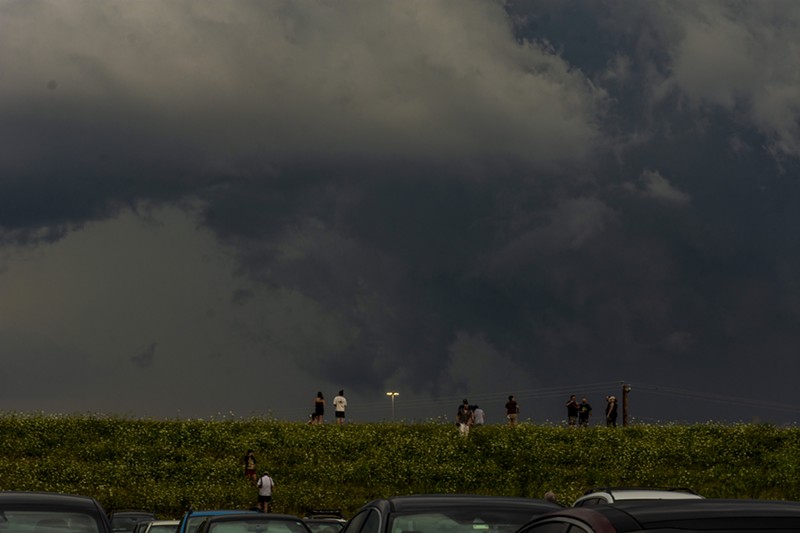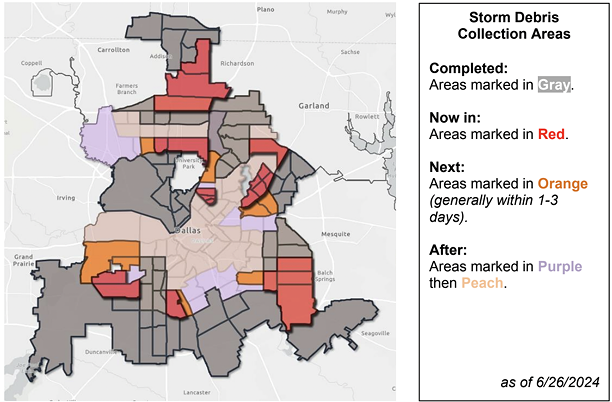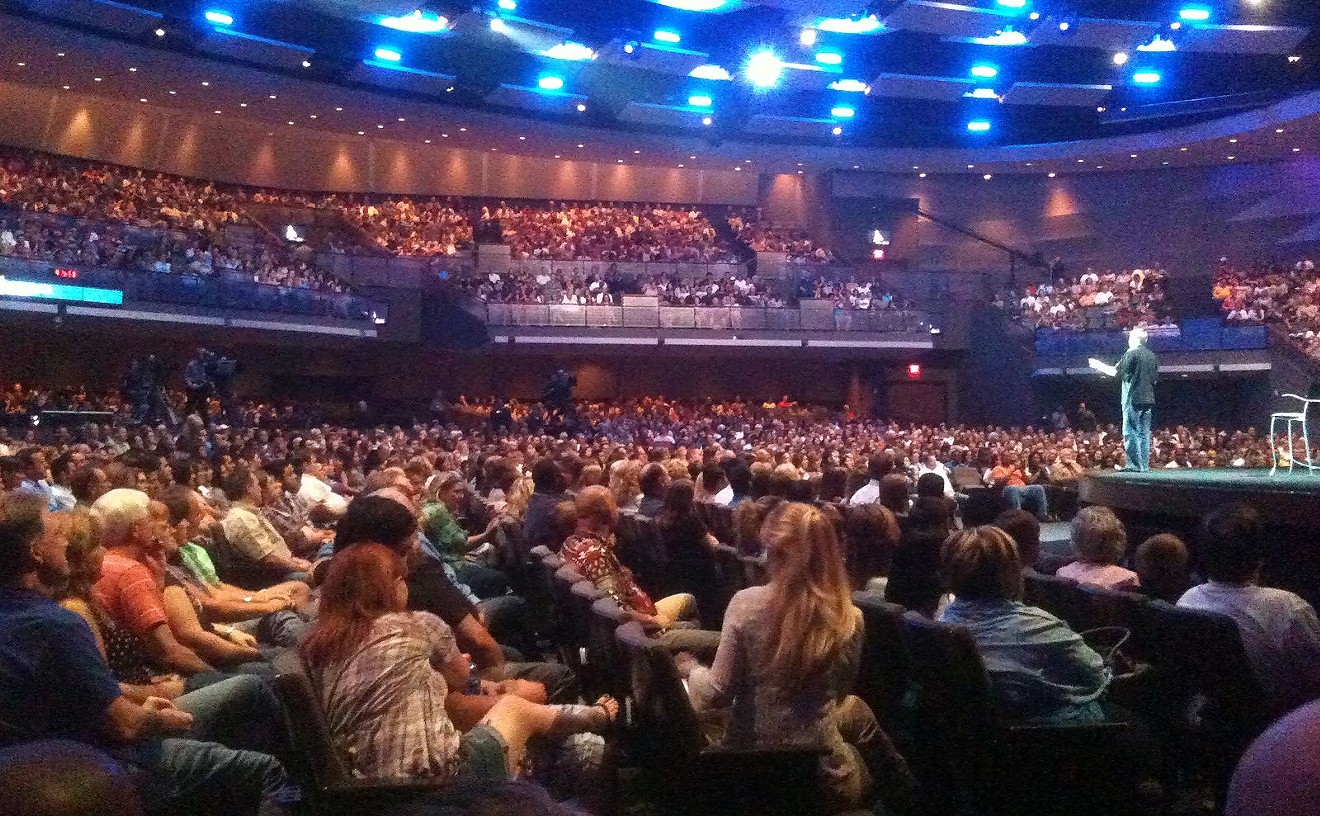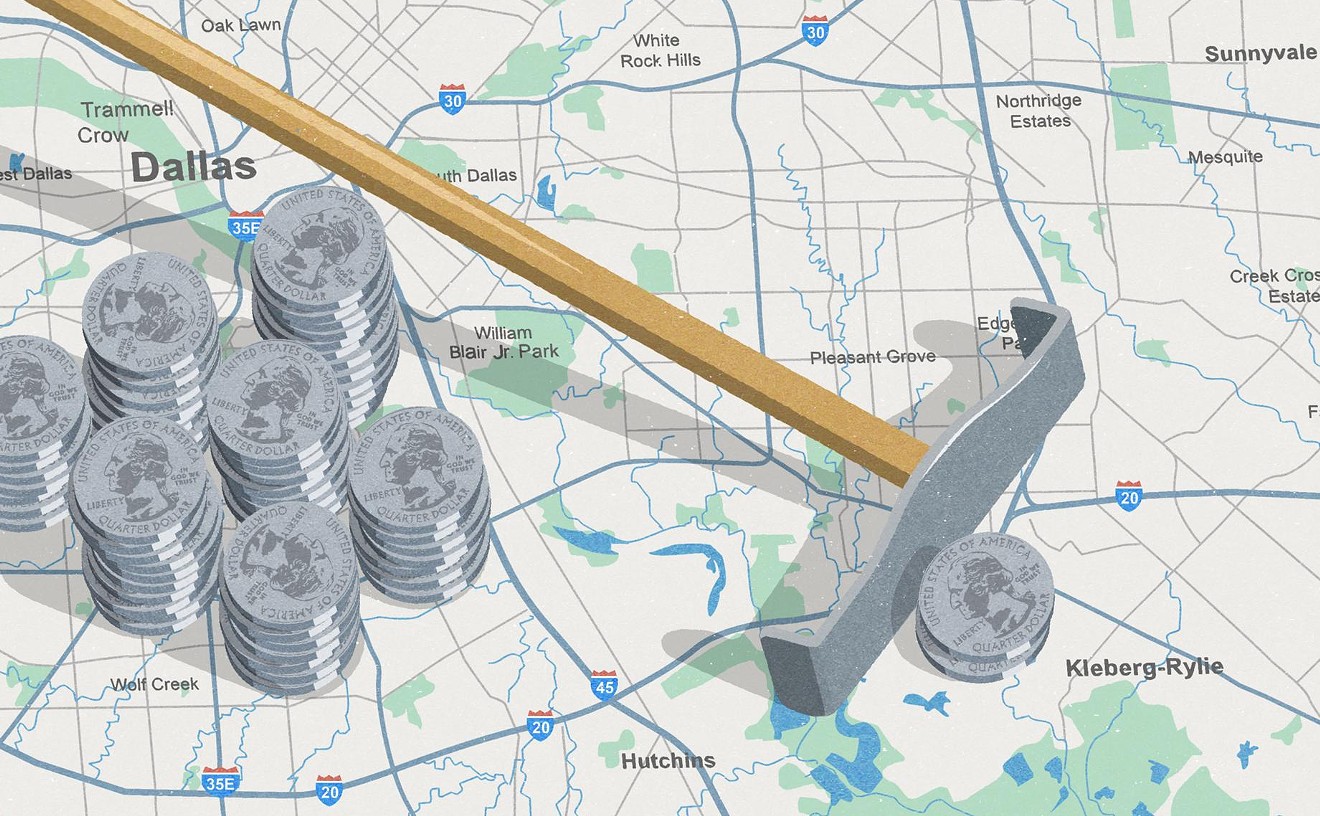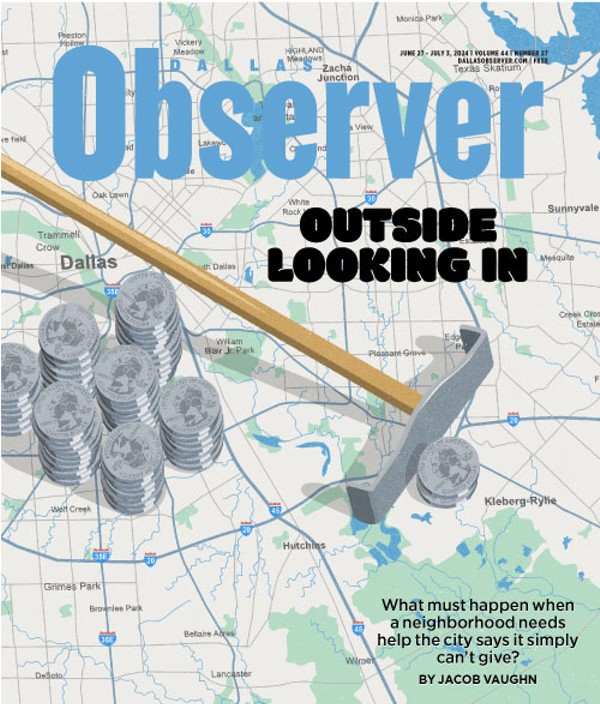It makes us wonder: How long, exactly, should storm recovery take in a major city?
The damage caused by the hurricane-force winds and baseball-sized hail of the May 28 storm was “unusual,” Dallas County Judge Clay Lewis Jenkins said in a news conference after the storm. It was so bad, in fact, that weeks later, officials with the Biden administration declared residents of Dallas and Kaufman counties eligible for the Federal Emergency Management Agency (FEMA) Individual Assistance program. Funding from the program can help residents cover the cost of temporary housing, home repairs and property losses that resulted from a severe storm.
While the program allowed residents to take their recovery into their own hands, some services, such as power restoration, flood mitigation and clearing away the debris of the hundreds of trees that were uprooted, are happening at the city’s pace.
In parts of East Dallas, power restoration took so long that District 9 City Council member Paula Blackmon filed a memorandum requesting an “urgent investigation” from Oncor. Blackmon said restoration delays, difficulties accessing accurate information and strained communication channels between Oncor and residents left her concerned in the days following the storm. The memo asks the power company to assess what went wrong in East Dallas and to present data from the storm in a community meeting.
“We started hearing that a lot of D9 was hit, and it was taking a while to get back online. Now I’m asking to go deeper to understand why,” Blackmon told the Observer. “We should be doing everything to make sure that power is retained during these harsh storms.”
According to Oncor, the May 28 storm was the second-worst in the company’s 112-year history, and an error in the company’s notification system exacerbated communication issues. As storms persisted in the week following May 28, delays caused by lightning and additional damage slowed restoration times as well. Over 600,000 customers lost power after the storm, a spokesperson for Oncor told the Observer, and while power was restored to nearly half of those households within 24 hours, some didn't have power again until June 2.
As of 6:30 AM we have 69,759 @oncor customers out in Dallas County. The goal is to get all those customers back on today. Lightening will stop the use of bucket trucks until it passes and storms can create more damage. Crews continue around the clock. @DallasCountyTx
— Clay Lewis Jenkins (@JudgeClayJ) May 31, 2024
Prolonged outages were common in neighborhoods in North and East Dallas, and Blackmon said she has already held preliminary meetings with Oncor to better understand why her district’s power was was so substantially affected. Additionally, she has asked the company to evaluate outages from past storms to identify any recurring problematic areas. Blackmon hopes findings from the investigation can be applied citywide to address Dallas’ increasingly severe weather patterns.
"Throughout the storm, we communicated with county officials as well as city staff and council members and provided updates, as they were available. We are also in the process of meeting with individual city council members to provide a post-storm briefing and respond to any of their concerns," an Oncor spokesperson said. "We recognize that any outage is a hardship, especially when it extends over several days."
A community meeting with Oncor is planned for September, which Blackmon hopes will help residents prepare for the fall tornados and severe cold snaps that have become more frequent in recent years.
“What happened on May 28, I can’t change that,” Blackmon said. “But what I can do is focus on how to make it better so when this next storm hits, because it will hit, how can we become a resilient community that is able to thrive after a major storm?”
In the days following the “fast and violent” storm, power restoration was a main priority for Oncor and city officials, leading to slower starts on services such as debris cleanup, Blackmon said. Rolling storms throughout the week after May 28 also affected the city’s ability to restart some services.
According to a city memo shared with the Observer, the Department of Sanitation Services has worked six to seven days each week since May 28 collecting debris, and though the department has “tripled its typical collection capacity” with the assistance of contractor crews, around half of the city has yet to see collections. In total, the department estimates the storm resulted in 400,000 cubic yards of debris.
“Crews are progressing through the City following the normal brush and bulky item monthly collection schedule, which typically takes one week to pass through each designated geographic area,” the memo states. “However, due to the volume of debris, it is taking approximately two weeks to complete each geographic area.”
Once a first sweep of the city is completed, crews will double back through neighborhoods that were serviced immediately following the storm and may not have had time to collect debris.
The memo said the normal, 20-yard limit on debris collection will not be enforced because the county’s storm-related cost estimates will likely be large enough to qualify for reimbursement through FEMA.
Many residents think of the debris piles as an eyesore, but for now Blackmon is urging patience.
“It's going to take some time to recover,” she said.

